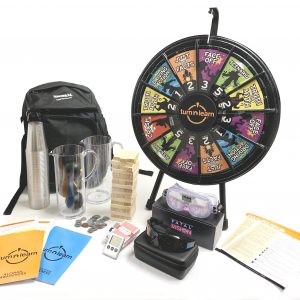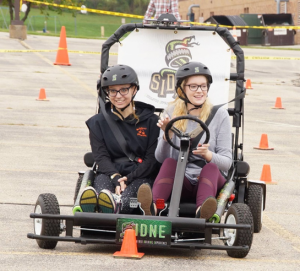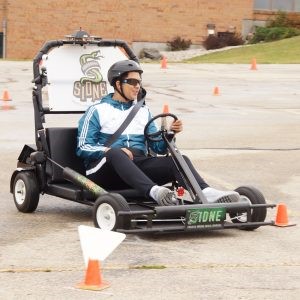 According to the Centers for Disease Control and Prevention, 29 people in the United States die in drunk driving crashes every day. That’s one person every 50 minutes, for a total of 10,497 people in 2016.
According to the Centers for Disease Control and Prevention, 29 people in the United States die in drunk driving crashes every day. That’s one person every 50 minutes, for a total of 10,497 people in 2016.
The best way to prevent drunk driving is to stop it from happening in the first place through education and awareness. Here are three tips for creating and implementing a successful alcohol education program:
Keep reading to learn more about tailoring your own drunk driving prevention program to help drivers and passengers of all ages make responsible decisions.
How you speak with children, teenagers, and young adults about drunk driving prevention will be vastly different than a campaign to educate adults on the dangers of driving under the influence.
It’s never too early to start talking with kids about drunk driving. Late-elementary school students love learning facts and playing games, like the team-based, hands-on Turn ‘N Learn Classroom Challenge. Age-appropriate topics include how alcohol affects the body in the long and short term, resisting peer pressure, and making smart decisions.
Teens and college students are more likely to engage in risky behaviors due to peer pressure, the desire to rebel, or a genuine lack of understanding of the consequences. The human brain continues to develop well into our twenties, which explains why many young adults seek out high-risk situations, including experimenting with alcohol. Hands-on simulated demonstrations give students a safe, first-hand experience of what it’s like under the influence and how difficult—and dangerous—even the simplest tasks can be. When used with the Fatal Vision® Alcohol Impairment Goggles, the Roadster Pedal Kart and the SIDNE® Impaired Driving Simulator help actively demonstrate the differences between driving drunk and driving sober.
For adults over age 21, the SUM-IT-CUP® with Master Bartender® game engages participants in a dialogue about responsible alcohol use by helping them learn that not all drinks are created equal.
Hands-on learning activities are incredibly useful in alcohol education programs. Taking an active role and applying what they’ve just learned helps participants feel more engaged and offers a memorable experience they’re more likely to tap into when making life-or-death decisions outside the classroom. The Fatal Vision® Alcohol Impairment Goggles, for example, help students understand what it feels like to complete everyday tasks under the influence.
The wide variety of interactive games, simulators, and other tools we offer allow you to design a flexible drunk driving prevention curriculum to match your goals, audience, and available resources.
Simulating real-life situations in your drunk driving prevention program can be a sobering reality check. By giving participants an experience they’ll remember, they’ll recall what they learned and felt each time they get behind the wheel – and think twice about driving drunk.
That’s why many high schools, for example, conduct mock crashes to demonstrate the devastating effects of drinking and driving. In a 2019 study, students reported that after watching a simulated crash, they were less likely to drink and drive in the future or get into a car with someone who would drive drunk, and were more likely to think about the risks associated with drinking and driving.
The Simulated Impaired Driving Experience (SIDNE®) is a custom-built electric powered kart that puts drivers and passengers behind the wheel for a unique way to get a safe, first-hand look at what it’s like to drive under the influence or ride with a driver who is impaired.
There are countless ways to customize your alcohol education program to successfully engage your audience. We can help you identify the right solutions for your situation and implement a safe presentation or demonstration.
Please contact us online or call our toll-free number 800.272.5023 to discuss which education tools best meet your needs.
Resources and Tools for Your Drunk Driving Prevention Program
Finding the right educational learning tools for a drunk driving prevention and alcohol awareness program can be challenging. You want to ensure your program is not only informative, but also interactive and engaging.
Benefits of Using Drunk Driving Simulators for an Alcohol Awareness Program
Drunk driving simulators can help engage participants and provide an enriching and memorable experience. In this post, we’ll cover six benefits of using drunk driving simulators for your alcohol awareness program.
 Which Drunk Driving Simulator is Right For You?
Which Drunk Driving Simulator is Right For You?
Drunk driving simulators are powerful tools that illustrate the potential dangers of drinking and driving, without participants ever needing to take a sip of alcohol. But which simulator should you choose for your drunk driving education program?